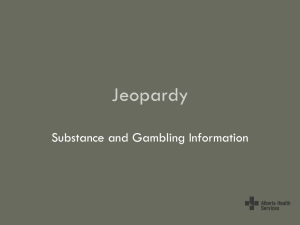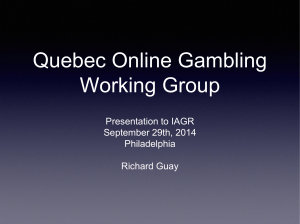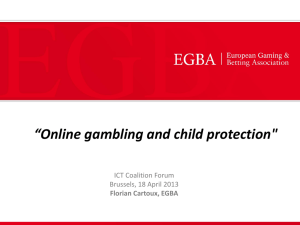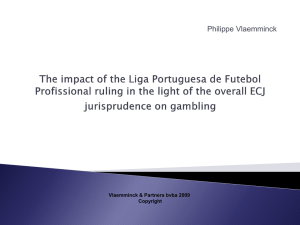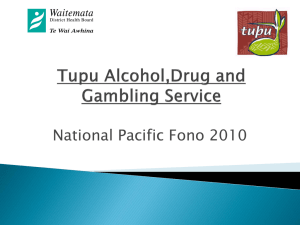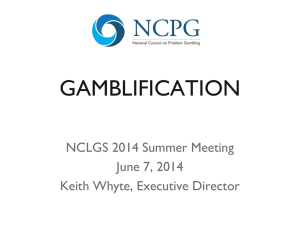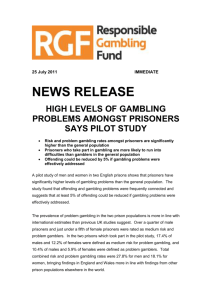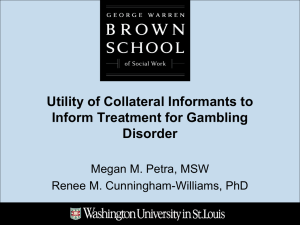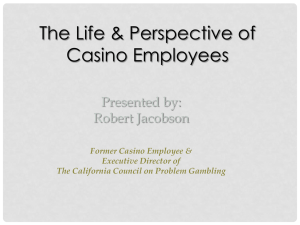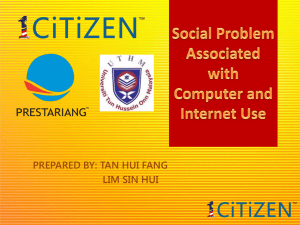Tracking Vulnerability & Resilience in Gambling Crime Careers
advertisement
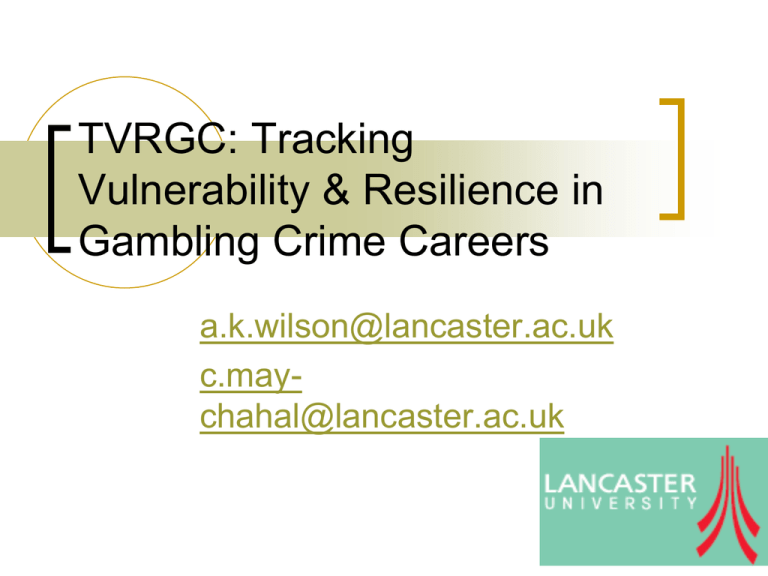
TVRGC: Tracking Vulnerability & Resilience in Gambling Crime Careers a.k.wilson@lancaster.ac.uk c.maychahal@lancaster.ac.uk Public Health Approach to reducing problem gambling and crime Targeting populations at risk Based on evidence and epidemiology Policy Context: Gambling Act – protecting the vulnerable, prisoner mental health, crime reduction Global Review (Williams et al, 2005) 1/3 of criminal offenders meet criteria for problem or pathological gambling. This is the highest rate yet found in any population (in UK this would be 26000 men). The prevalence of gambling within prisons (40%) appears lower than in the general population. Inmates who do gamble tend to do so regularly, and problem and pathological gamblers are disproportionately represented among this group. Screening and provision of specialized help are currently lacking in most correctional facilities TVRGC Partnership: Lancaster and Glasgow Universities Funded by RGF/ESRC 36 month screening and follow up study (longitudinal) 6 prisons – England/Scotland, Male/Female, North/South Problem Gambling Severity Index Bet more than can afford to loose A need to gambling with increasing amounts of money Chasing losses Borrowed money or sold items to get money to gamble Felt had a problem with gambling Gambling causing health problems including stress and anxiety People criticising gambling behaviour Gambling causing financial problems for you or your household Felt guilty about way that you gamble or what happens when you gamble 3 Gambling Groups (PGSI category) Non problem and low risk (0-2) Moderate risk and problem (3+) (Problem gambler 8+) Abstainers (those who haven’t gambled in 12 months before prison) Prevalence questionnaire in 6 prisons (N=1200) Group 1: Moderate/severe problem gamblers – 9 in each prison Group 2: Non problem/low risk gamblers – 9 in each prison Group 3: Abstainers – 9 in each prison First interview pre-release: 1 – 2 months after questionnaire completion. In-depth (approx 1 hour) gathering personal history, gambling career data Second interview: 6-8 months later in community. In depth (approx 1 hour) probing gambling careers and resilience factors since leaving prison Third interview: 6-8 months later in community. In depth (approx 1 hour) continuing to probe gambling careers and resilience factors since leaving prison Tracking crime careers of all on PNC Looking at Resilience Family support Social networks Participation Identity Self esteem Problem solving International Resilience Project Canada Looking at co-morbidity Drug use Alcohol use Links to gambling Links to crime Links to resilience OffGam Pilot Wave 1 Findings (N=201) Averaging a 64% response rate 52% knew of at least one other person in prison with a gambling problem 26.4% knew of at least five other people 5.4% consider their current offence was linked to gambling 12% linked gambling to past offending (21% of gamblers) Problem Gambling Prevalence in Prison (Pilot) Not gambled 12 mths prior Gambled with no problem Low Risk (1-2 PGSI) Moderate Risk (3-7 PGSI) Problem Gambler (8+ PGSI) 43.7% 6.7% 19.0% 17.1% 14.3% 13% (27) of total (a quarter of all gamblers) volunteered for treatment Key Contacts England Research Officer: Allie Wilson at Lancaster a.wilson@lancaster.ac.uk (01524 594095) Co-ordinator: Corinne May-Chahal c.may-chahal@lancaster.ac.uk (01524 594104) GamCare: http://www.gamcare.org.uk/ A useful reference: Williams et al, 2005, Gambling and Problem Gambling Within Forensic Populations: A Review of the Literature, Criminal Justice and Behavior, 32 pp 665-689
